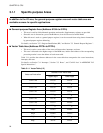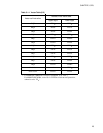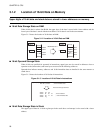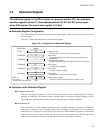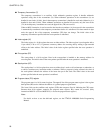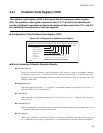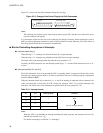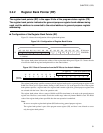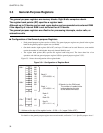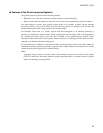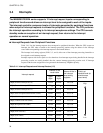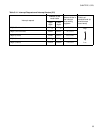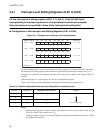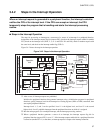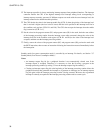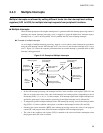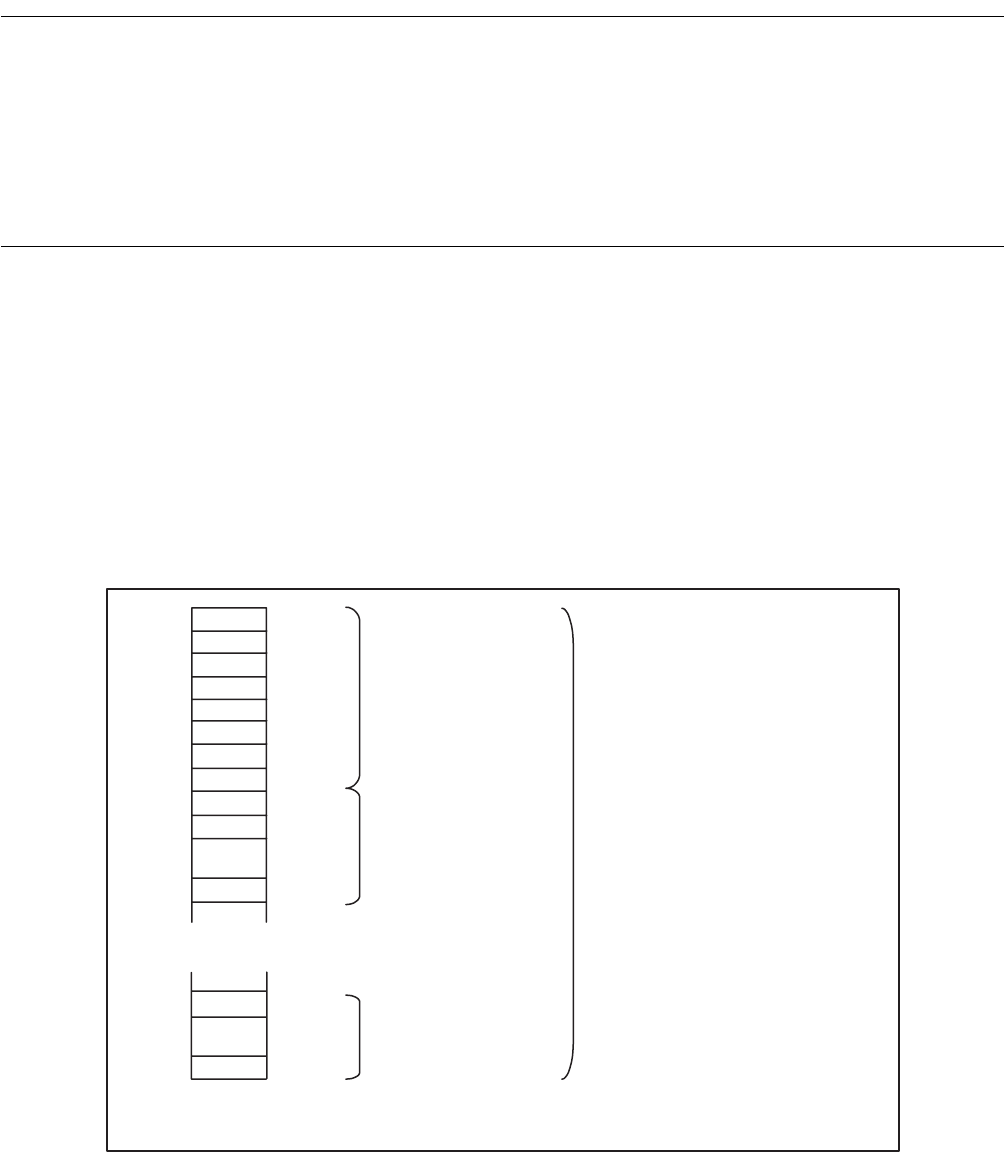
32
CHAPTER 3 CPU
3.3 General-Purpose Registers
The general-purpose registers are memory blocks. Eight 8-bits comprise a bank.
The register bank pointer (RP) specifies a register bank.
Although up to 32 banks can be used, some banks can be expanded onto external RAM
if the capacity of internal RAM is not sufficient for all 32 banks.
The general-purpose registers are effective for processing interrupts, vector calls, or
subroutine calls.
■ Configuration of the General-purpose Registers
• Each general-purpose register consists of 8 bits. The general-purpose registers are placed in the register
banks at the general-purpose register area (on RAM).
• One bank contains eight registers (R0 to R7), and up to 32 banks can be used. However, some models
restrict the number of usable banks when only internal RAM is used.
• The register bank pointer (RP) specifies the register bank being used. The lower three bits of an
operation code indicate general-purpose register 0 (R0) to general-purpose register 7 (R7).
Figure 3.3-1 shows the configuration of the register banks.
Figure 3.3-1 Configuration of Register Bank
For details on the general-purpose register area on each model, see Section "3.1.1 Specific-purpose Areas ".
100
H
* R0 000
R1 001
R2 010
R3 011
R4 100
R5 101
R6 110
R7 111
R0 000
R1 001
R7 111
R0 000
R7 111
108
H
*
1F8
H
*
1FF
H
*
.
.
.
.
.
.
.
.
.
.
.
.
.
.
.
.
.
.
Bank 0
Bank 1
Bank 2
to
Bank 30
Ban 31
(RP=00000---
B
)
(RP=00001---
B
)
(RP=11111---
B
)
32 banks (on the RAM area)
The number of usable banks
is dependent on the size
of the usable RAM area.
*: Address at the top of the register banks = 0100
H
+ 8 × (upper 5 bits of RP)



